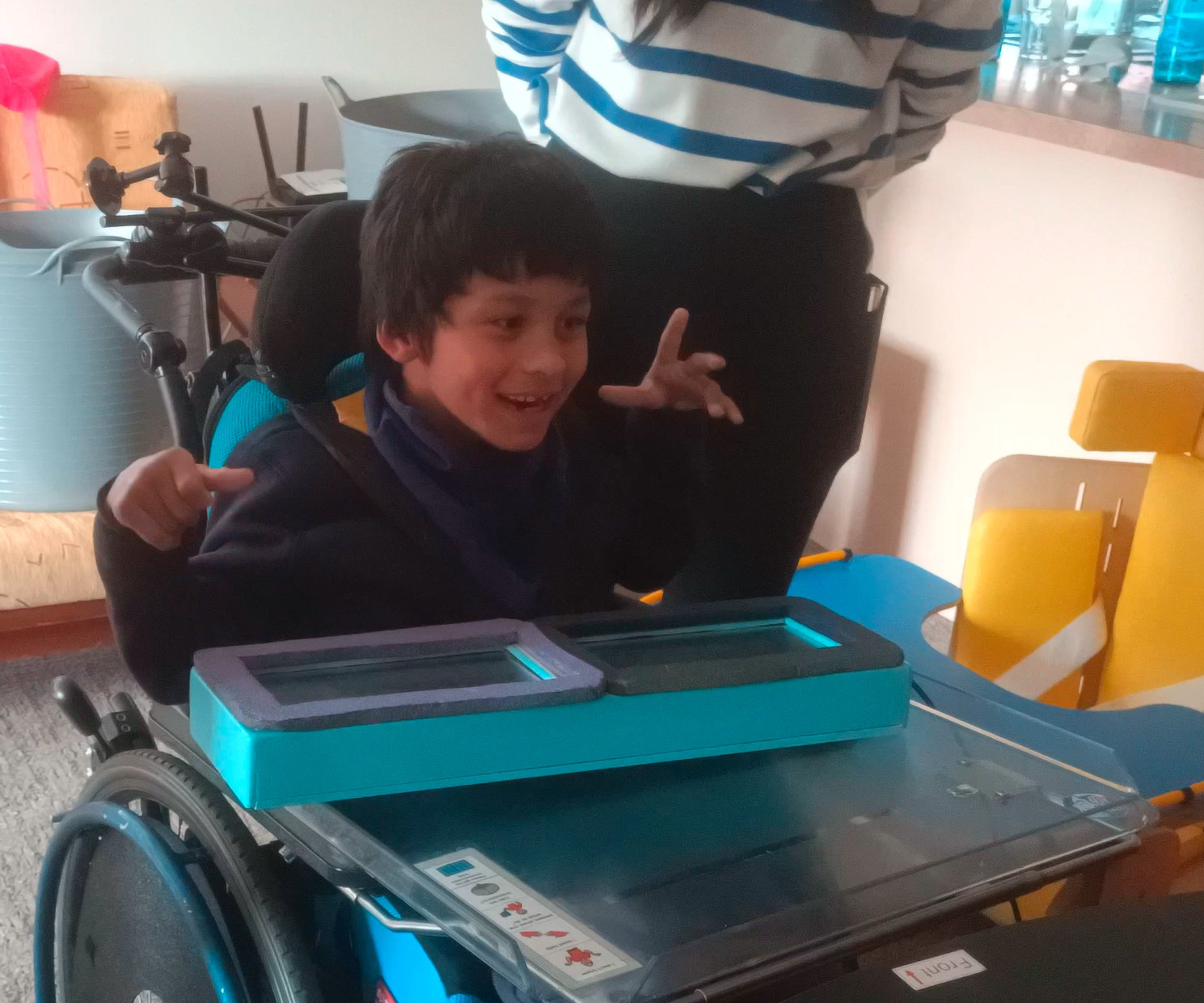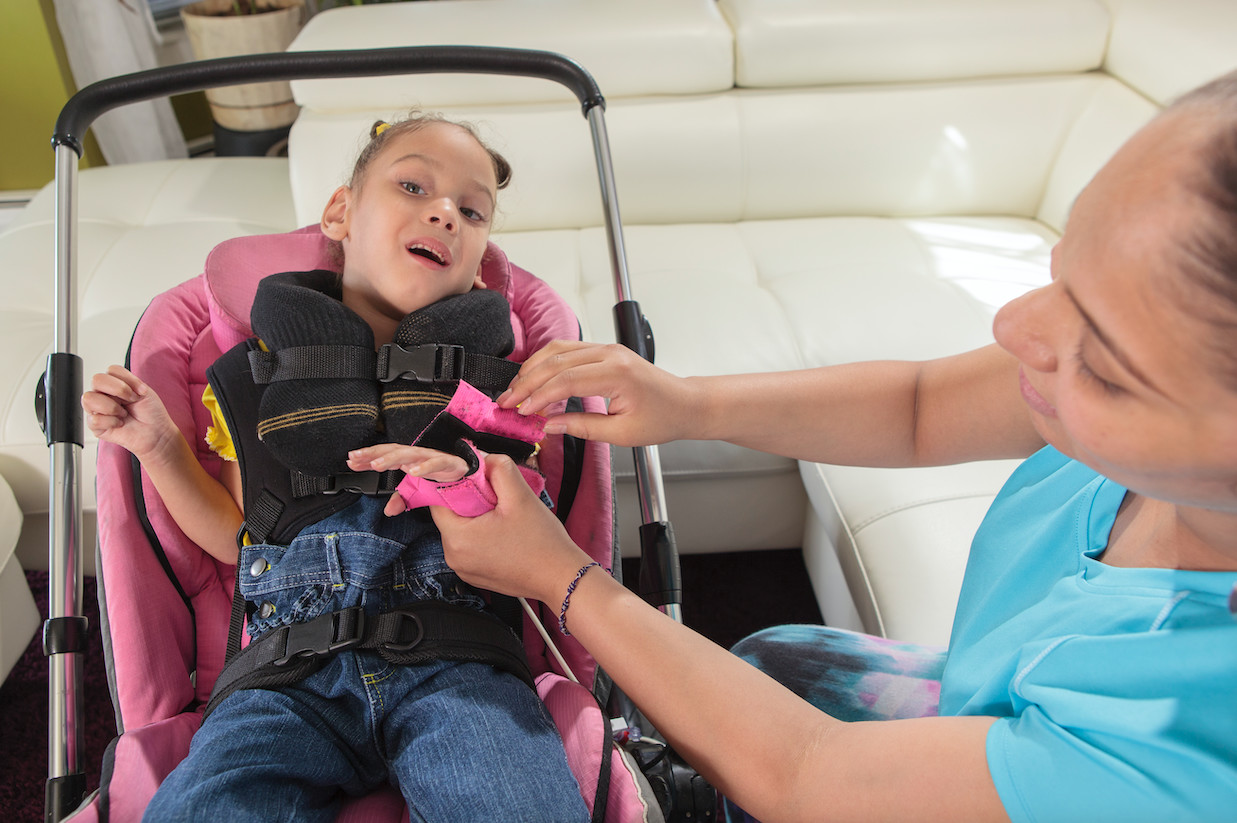
Politics & Society
It’s time to make waves in beach accessibility

Working with an eight-year-old boy with cerebral palsy, researchers have co-designed a video game controller to provide more opportunities for fun and social connection
Published 27 October 2023
When Formula 1 champion Lewis Hamilton shared a beautiful story of his brother Nicolas experiencing a professional F1 simulator, he said “The smile you see here never left his face.”
Nicolas Hamilton has cerebral palsy, and the Mercedes team modified the seat, steering wheel and pedals to make it happen.

Another person dealing with the challenges of cerebral palsy is eight-year-old Jerome. He loves video games, but a combination of his complex cerebral palsy and lack of accessible options limits his opportunities.
I first met Jerome’s dad, Rowland on a rainy December evening at the University of Melbourne when he attended a thank-you function for supporters of the Faculty of Engineering and Information Technology (FEIT).
We talked about how our team was planning to develop bespoke assistive devices for people with disabilities.

Politics & Society
It’s time to make waves in beach accessibility
Rowland shared that one of Jerome’s favourite things to do is watch YouTube videos of people playing video games, but due to his cerebral palsy, he could not play games by himself.
Rowland was thrilled and hoped our team could build something that Jerome could use to play a video game independently.
In Jerome’s case, he does not have the fine motor ability to use a regular or modified video game controller and is non-verbal. So, three students from the Faculty of Engineering and Information Technology undertook a project to turn this idea into a reality.
The team comprised Aswini Abeysinghe, Fidel Febri Halim and Karen Jones.
According to the 2022 Digital Australia report nearly 17 million Australians play video games regularly. On average, Australians play 83 minutes per day and 75 per cent of people play video games socially, making them one way for families to connect.

While most people take their access to video games for granted, this is not the case for people with disabilities.
As Rowland said, “For many children with complex disabilities and their parents, the idea of playing a video game seems like a foreign concept.”
But video games can provide more than entertainment, they also have therapeutic benefits for children with cerebral palsy. Games that utilize motion-sensing technology or virtual reality are especially helpful as part of physical therapy.
Certain video games can also enhance cognitive skills, including problem-solving, spatial awareness and strategic thinking.

Health & Medicine
Making disability support work across real lives
Multiplayer video games or online gaming communities can also provide opportunities for children with cerebral palsy to interact with their peers and build social skills, offering a sense of accomplishment and autonomy.
Over the last few months, our team has designed and built prototypes at the Telstra Creator Space, Melbourne Connect to develop a range of potential technologies that Jerome may be able to use.
To start, the team spoke to Rowland and it became clear that there was a lack of assistive technology available that met the needs of both Jerome and his parents – including being easy-to-use for Jerome, integrated with games he found enjoyable and a quick setup time for his parents.
So it was clear that a bespoke device, designed to work specifically for Jerome was needed. After the initial interview with Jerome’s parents, our team settled on three technologies that had the potential to be successful.

We used a fast-prototyping principle to build a touch button (that doesn’t need fine motor skills), a kick button (Jerome was known to use his feet to apply some pressure) and motion-tracking software (software that records the movements of the head to work out the direction of movement) to enable video game control.
On the first trial with Jerome, we presented him with the initial prototypes of the three technologies to control a couple of video games. While the team expected to be surprised, nothing could have prepared us for the effect it would have.
For the first time in Jerome’s life, he was able to play a video game, instead of watching a YouTube video of someone playing a game or his parents supporting him.

Rowland said, “It also provided an opportunity for me and Jerome to play as a single user without causing my back problems to flare up. This was only previously available at car racing games at cinemas and arcades.”
His parents commented that his attention span was usually 15 minutes before he moved on to another task but in this instance, he played the game for over an hour and was fully engaged for the whole time. There were multiple times during the session when Jerome was laughing and enjoying himself.
Jerome’s parents said that “Jerome appeared so thrilled and he was far more patient than usual in waiting for adjustments or the next game.”
Rowland said, “What was lovely was that he was so excited about trying new games, games he never really had a chance of playing before.”
“While this was only a prototype, the potential is immense. I can see how an ecosystem of solutions could make it easier for kids like Jerome to have similar experiences to their peers.”

Looking back at the first test with Jerome, Engineering student Fidel Febri Halim said, “Witnessing Jerome engage with our prototype and enjoy the gaming experience was a heartening moment and a humbling reminder of our immense responsibility.
“It has reinforced my belief in the importance of inclusive design and technology that can empower individuals with disabilities to lead fulfilling lives.”
Fellow student designer Aswini Abeysinghe said, “I hope we can provide Jerome with an assistive device that not only enhances his gaming experiences but also offers Jerome a sense of self-empowerment and an opportunity for him to connect with his family further.”

Sciences & Technology
Wearable devices that use human energy
As we saw, access to technology can transform lives by providing tools and opportunities for greater independence and inclusion. Current technologies are made for the masses, but disabilities are unique.
Because cerebral palsy is specific to a person and can come with various other issues, each solution needs to be person-centred to maximise effectiveness.
This means that a single solution does not exist and we need an ecosystem of open-source, inexpensive solutions that are interoperable and easy to customise for each person.
Furthermore, insurance cover like the National Disability Insurance Scheme (NDIS), Transport Accident Commission (TAC) or private insurance often do not fully cover the costs of these technologies, leaving individuals and families unable to afford them.

If they can’t afford available technology, people with disabilities often have to make do with what is available, rather than technologies suited to their specific needs.
The project started as a means to help Jerome, but in turn, Jerome helped the team see their world differently and discover their own passions.
Our goal is to use personalised technology to empower people by reducing barriers to inclusion in schools and employment for children and adults with CP and others living with disabilities.
Over the next five years, we hope to expand this program to build the foundation for an ecosystem of inexpensive solutions that can be mixed and matched. We hope to have infrastructure and methodologies to make it easier and cheaper to develop solutions suited to an individual’s needs and goals
For more information on the project: https://asha-tech.web.app/
Banner: Shutterstock